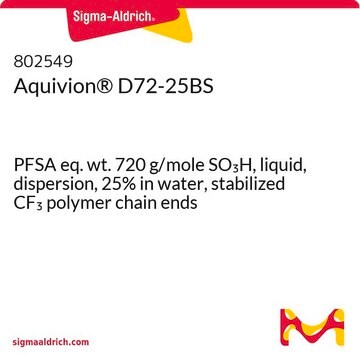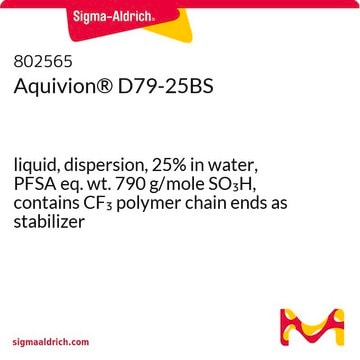939730
Sulfonated polysulfone

proton conducting polymer, degree of sulfonation 90%
Synonym(s):
Sulfonated aromatic polymer for fuel cells and PEMs, Sulfonated poly(arylene ether sulfone) ionomer
About This Item
Recommended Products
description
degree of sulfonation: 75-110%
Quality Level
form
powder
mol wt
20-90 kDa
color
white
functional group
sulfonic acid
polymer architecture
shape: linear
InChI
1S/C12H8F2O8S3.C12H8F2O2S.C12H10O2.2Na/c13-9-3-1-7(5-11(9)24(17,18)19)23(15,16)8-2-4-10(14)12(6-8)25(20,21)22;13-9-1-5-11(6-2-9)17(15,16)12-7-3-10(14)4-8-12;13-11-5-1-9(2-6-11)10-3-7-12(14)8-4-10;;/h1-6H,(H,17,18,19)(H,20,21,22);1-8H;1-8,13-14H;;
InChI key
MSKVMJLWNYCWLA-UHFFFAOYSA-N
General description
Application
related product
Storage Class Code
11 - Combustible Solids
WGK
WGK 3
Flash Point(F)
Not applicable
Flash Point(C)
Not applicable
Certificates of Analysis (COA)
Search for Certificates of Analysis (COA) by entering the products Lot/Batch Number. Lot and Batch Numbers can be found on a product’s label following the words ‘Lot’ or ‘Batch’.
Already Own This Product?
Find documentation for the products that you have recently purchased in the Document Library.
Our team of scientists has experience in all areas of research including Life Science, Material Science, Chemical Synthesis, Chromatography, Analytical and many others.
Contact Technical Service







